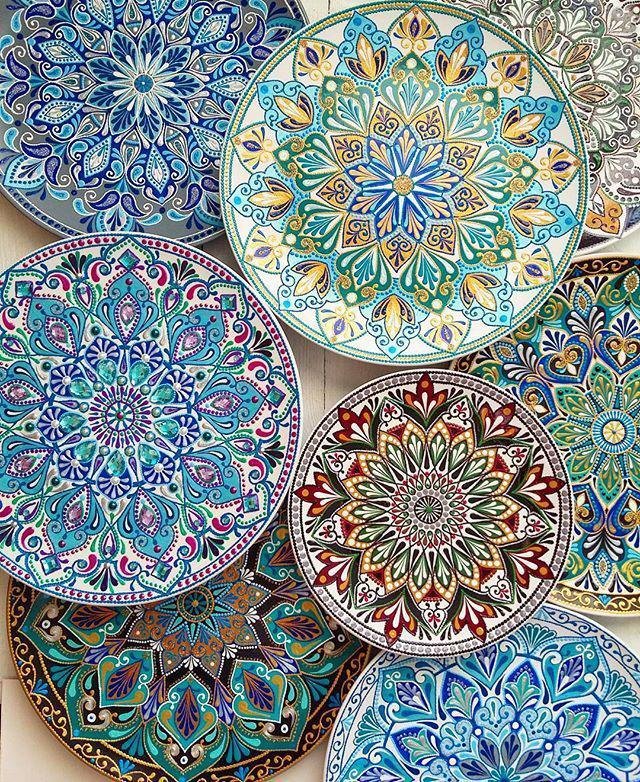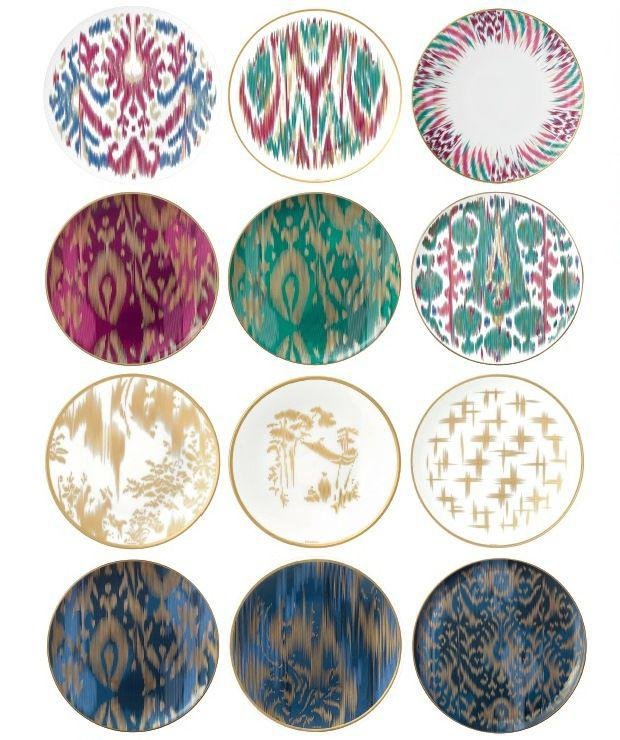How to decorate the walls with painted copper plates?
In ancient Greece dishes were divided into dining rooms and decorative ones, in China in the 7th century they learned how to produce porcelain dishes, but in Europe the secret of the finest Chinese porcelain was unraveled only in the Middle Ages. But how did the tradition to hang decorative plates on the wall appear? Its origin is associated with another tradition – to reward patrials with exquisite Chinese dishes for special services to the state. Most likely, the one that arose at the end of the 19th century also influenced fashion for collecting. And so, in the 60s of the last century, the factory of the French jeweler Rene Lalique released the first collection of plates designed exclusively for home decor.
Today, “plate” decor does not lose its relevance and keeps up to date. For example, you don’t have to buy special decorative or collection plates – right now you can make a composition from your own plates. In addition, wall plates can organically fit even in a modern, and not just in a classic interior, as it was before.
Oriental-style painted plates can also perfectly fit into any interior and decorate the walls of your home, hotel, cafe or any other establishment.

First, we need to learn how to properly compose a wall composition by color, shape, size and pattern of copper plates. Further, how and where it can be placed.
We compose a composition
In compiling a collage of different plates, perhaps the main thing is that something unites them, in our case it is a national flavor. And it is also very important that the whole composition fits seamlessly into the interior of the room, and at the same time does not clutter it.

The color scheme of the interior, walls and panels
On a plain background, you can hang plates of any color – from bright and colorful to contrasting or strict. Keep in mind that the brighter or darker the wall, the more bright the saucers should be so as not to get lost in the background. The color scheme of the wall composition can and should support the color scheme of the kitchen interior (furniture, curtains, decoration, etc.);
A black and white plate will look great on a black or white background. You can create a game of color plates and colored walls. Plates of the same unobtrusive shades will look good in the interior in light, pastel colors. If the wall in the kitchen is decorated with wallpaper with a pattern, then try to choose ikat plates that would harmoniously combine not only with color, but also with the wallpaper pattern.

We combine plates with each other
Making a collage of dishes, you can make a combination of different-sized saucers with ikat patterns, but in one color scheme. Most often, a “plate” panel combines not only color, but also the theme. The most original idea is to hang a panel of plates assembled according to the mosaic principle.
The interior of the room in a modern style will become more interesting due to the combination of a variety of bright and colorful plates, combined by shape, color or patterns. In ethnic styles, copper trays, plates with folk paintings and other types of plates are appropriate.
Nine popular forms for compositions for plates
Having decided on the composition of your wall composition, you need to determine the order of the plates relative to each other. One row (or more). With it, you can create an emphasis on one of the walls – for example, on the one located near the dining table.

Symmetric composition
An ideal option if the rest of the decor in the room is also located symmetrically, or if you need to highlight a large object on the wall – say, a mirror.
The whole wall. The composition should fill an empty section of the wall.
Wave. Such a group in the form of a curved line will look amazing on an empty wide wall.
Arch. This form will allow you to elegantly decorate the area around a large interior item – the same mirror or even a window.
Patterns. Fantasy figures can easily be made up of saucers – for example, a snowfield, an asterisk. However, keep in mind that in this case, the mount is verified especially carefully so as not to go beyond the border of the figure. In size, that is, from large to small or vice versa. Such compositions are placed horizontally or vertically – the main thing here will be exactly the correspondence of sizes.
Around the door. Even if there are enough decorative accents in the spacious kitchen, the place near the doorway almost always remains empty. It can be advantageously beaten by placing a symmetrical composition of decorative plates.
Free forms. A good solution to host a disparate collection or hand-made work. In this case, you cannot think about combinations of shapes, colors and sizes.

Dish composition location
Plates can be the final touch of a furniture composition – for example, decorate the space above the console, the head of the bed or between the chairs. Hang the plates over the fireplace, in the wall between two doors or windows, under the ceiling in the form of a frieze. Single pieces on a stand will enliven a dresser or a window sill. If you want to enhance the impression of a “plate decor”, consider where to place them so that the “interior” details “sound”. Decorative plates next to wall sconces and mirrors on the windowsill look especially well.

It is widely believed that only classical interiors can be decorated with decorative plates, but in fact they are suitable for furnishings decorated in any style. The national flavor will bring products with a special combination of colors and a unique ornament. Bright spots will make the atmosphere of the house cozy, warm and attractive at home. These products will make an excellent company of paintings, photographs and various cute little things, which are in every home.
